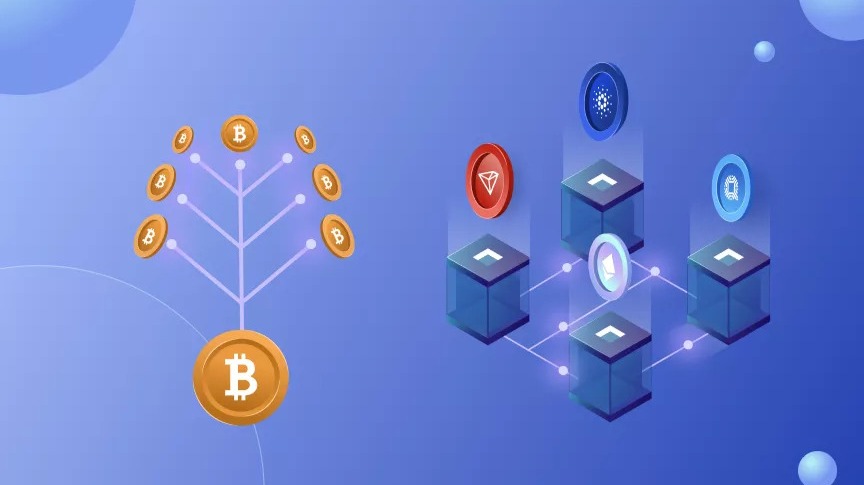
Staking vs. Yield Farming: Which to Choose?
Category: Bitcoin & Crypto Mining
As decentralized finance (DeFi) continues to grow, crypto investors are exploring ways to earn passive income through staking and yield farming. While both strategies offer potential rewards, they differ significantly in risk, complexity, and returns.
In this guide, we’ll break down staking vs. yield farming, highlight their pros and cons, and help you decide which strategy fits your goals.
✅ WHAT IS STAKING?
Staking involves locking up a cryptocurrency to support the operations of a blockchain network that uses Proof of Stake (PoS) or a similar consensus mechanism.
By staking, you help secure the network and validate transactions. In return, you earn rewards, typically paid in the same token you're staking.
Popular staking coins: Ethereum (ETH), Cardano (ADA), Solana (SOL), Polkadot (DOT)
✅ WHAT IS YIELD FARMING?
Yield farming is a DeFi strategy where you lend or provide liquidity to decentralized protocols in exchange for rewards. These rewards can come in the form of interest, protocol tokens, or a share of transaction fees.
Yield farming often requires interaction with automated market makers (AMMs) like Uniswap, Curve, or PancakeSwap.
Popular platforms: Aave, Compound, SushiSwap, Yearn Finance
⚖️ KEY DIFFERENCES BETWEEN STAKING AND YIELD FARMING
Risk Level:
Staking usually carries low to medium risk, depending on the network. Yield farming, on the other hand, often comes with medium to high risk due to volatile token prices and smart contract vulnerabilities.
Reward Rate:
Staking provides more stable and predictable returns, typically ranging from 4% to 10% annually. Yield farming can offer much higher rewards, sometimes over 100%, but with significantly more risk.
Complexity:
Staking is beginner-friendly and easy to set up on most exchanges or wallets. Yield farming is more complex, often involving multiple steps across DeFi platforms, and requires deeper understanding of liquidity pools and smart contracts.
Lock-in Period:
Staked assets may be locked for a fixed period, depending on the protocol. Yield farming usually offers more flexibility, allowing you to enter and exit pools more freely.
Volatility Exposure:
Staking is less affected by price volatility and avoids impermanent loss. Yield farming is more exposed to impermanent loss and token price swings, especially when providing liquidity.
Best For:
Staking is ideal for long-term investors seeking steady income with minimal effort. Yield farming suits more advanced users looking for higher returns and who are comfortable managing DeFi risks.
PROS AND CONS OF STAKING
Pros:
• More predictable and stable returns
• Lower risk of loss
• Great for beginners
• Supports blockchain networks
Cons:
• Lower yield compared to yield farming
• Funds may be locked for a period
• Inflation may reduce real value of rewards
PROS AND CONS OF YIELD FARMING
Pros:
• Potentially very high returns
• Flexible participation
• Incentives from multiple protocols
Cons:
• Higher risk due to volatility and smart contract bugs
• Impermanent loss can eat into profits
• Requires constant monitoring
WHICH SHOULD YOU CHOOSE?
The right choice depends on your investment goals and risk tolerance.
• Choose staking if you prefer simplicity, long-term holding, and network security.
• Choose yield farming if you are comfortable with risk, enjoy DeFi, and seek higher returns in a shorter time.
You can also do both by diversifying your strategy. For example, stake a portion of your holdings for safety while allocating another part to high-yield DeFi opportunities.
SUMMARY
Both staking and yield farming are powerful tools for generating passive income in crypto. If you're just starting, staking is a safer way to get involved. As you become more experienced, exploring yield farming can unlock new profit potential.
Always do your research, use reputable platforms, and never invest more than you can afford to lose.
In this guide, we’ll break down staking vs. yield farming, highlight their pros and cons, and help you decide which strategy fits your goals.
✅ WHAT IS STAKING?
Staking involves locking up a cryptocurrency to support the operations of a blockchain network that uses Proof of Stake (PoS) or a similar consensus mechanism.
By staking, you help secure the network and validate transactions. In return, you earn rewards, typically paid in the same token you're staking.
Popular staking coins: Ethereum (ETH), Cardano (ADA), Solana (SOL), Polkadot (DOT)
✅ WHAT IS YIELD FARMING?
Yield farming is a DeFi strategy where you lend or provide liquidity to decentralized protocols in exchange for rewards. These rewards can come in the form of interest, protocol tokens, or a share of transaction fees.
Yield farming often requires interaction with automated market makers (AMMs) like Uniswap, Curve, or PancakeSwap.
Popular platforms: Aave, Compound, SushiSwap, Yearn Finance
⚖️ KEY DIFFERENCES BETWEEN STAKING AND YIELD FARMING
Risk Level:
Staking usually carries low to medium risk, depending on the network. Yield farming, on the other hand, often comes with medium to high risk due to volatile token prices and smart contract vulnerabilities.
Reward Rate:
Staking provides more stable and predictable returns, typically ranging from 4% to 10% annually. Yield farming can offer much higher rewards, sometimes over 100%, but with significantly more risk.
Complexity:
Staking is beginner-friendly and easy to set up on most exchanges or wallets. Yield farming is more complex, often involving multiple steps across DeFi platforms, and requires deeper understanding of liquidity pools and smart contracts.
Lock-in Period:
Staked assets may be locked for a fixed period, depending on the protocol. Yield farming usually offers more flexibility, allowing you to enter and exit pools more freely.
Volatility Exposure:
Staking is less affected by price volatility and avoids impermanent loss. Yield farming is more exposed to impermanent loss and token price swings, especially when providing liquidity.
Best For:
Staking is ideal for long-term investors seeking steady income with minimal effort. Yield farming suits more advanced users looking for higher returns and who are comfortable managing DeFi risks.
PROS AND CONS OF STAKING
Pros:
• More predictable and stable returns
• Lower risk of loss
• Great for beginners
• Supports blockchain networks
Cons:
• Lower yield compared to yield farming
• Funds may be locked for a period
• Inflation may reduce real value of rewards
PROS AND CONS OF YIELD FARMING
Pros:
• Potentially very high returns
• Flexible participation
• Incentives from multiple protocols
Cons:
• Higher risk due to volatility and smart contract bugs
• Impermanent loss can eat into profits
• Requires constant monitoring
WHICH SHOULD YOU CHOOSE?
The right choice depends on your investment goals and risk tolerance.
• Choose staking if you prefer simplicity, long-term holding, and network security.
• Choose yield farming if you are comfortable with risk, enjoy DeFi, and seek higher returns in a shorter time.
You can also do both by diversifying your strategy. For example, stake a portion of your holdings for safety while allocating another part to high-yield DeFi opportunities.
SUMMARY
Both staking and yield farming are powerful tools for generating passive income in crypto. If you're just starting, staking is a safer way to get involved. As you become more experienced, exploring yield farming can unlock new profit potential.
Always do your research, use reputable platforms, and never invest more than you can afford to lose.




